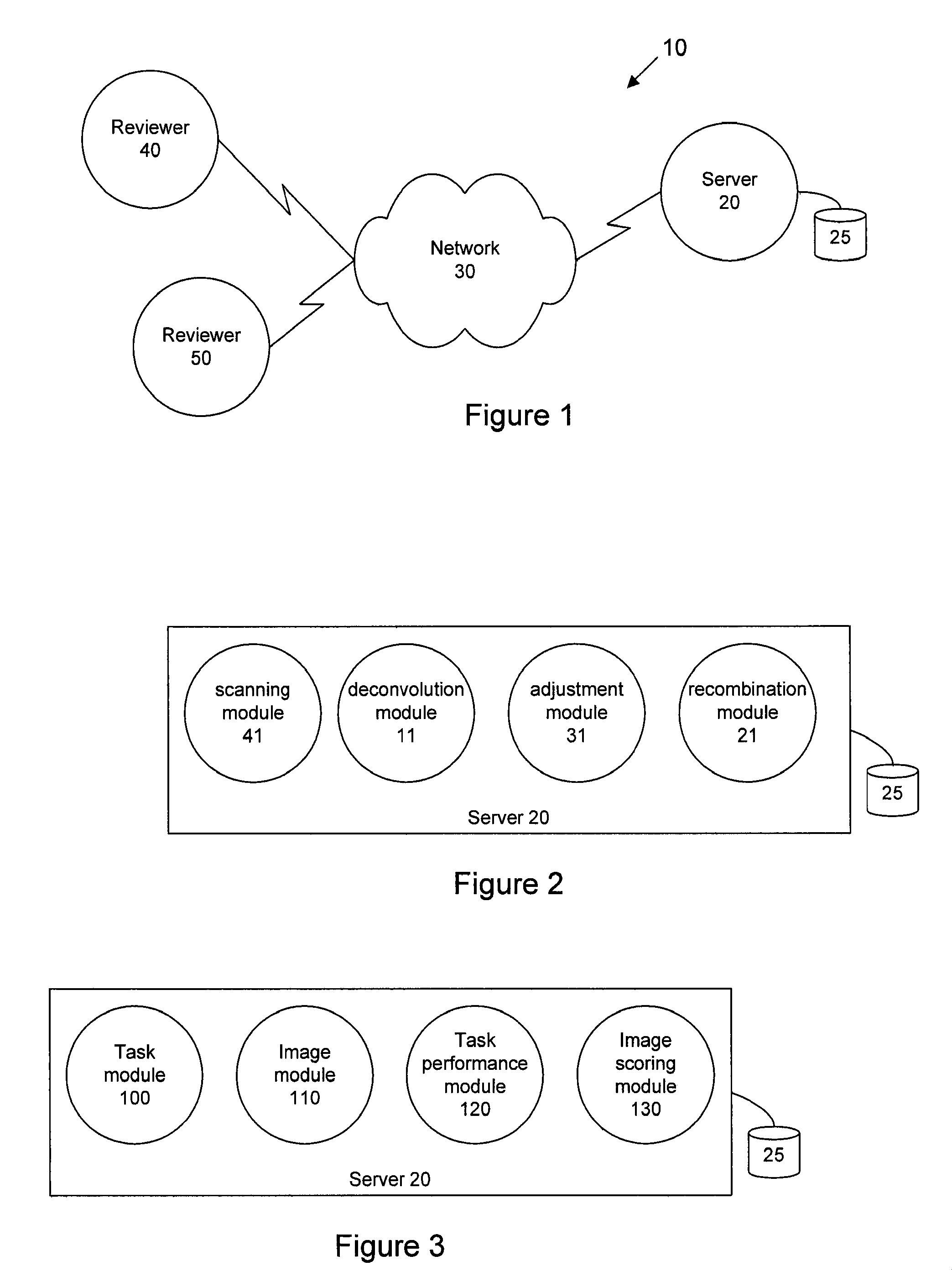Image Quality for Diagnostic Resolution Digital Slide Images
a digital slide and diagnostic resolution technology, applied in the field of digital pathology, can solve the problems of exacerbated challenges associated with assessing image quality and/or interpretability, difficult to examine every area of a digital slide at full resolution to determine its quality and/or interpretability, and relative difficulty in objectively assessing the quality or interpretability of imagery data generated by such devices.
- Summary
- Abstract
- Description
- Claims
- Application Information
AI Technical Summary
Benefits of technology
Problems solved by technology
Method used
Image
Examples
Embodiment Construction
[0028]Certain embodiments as disclosed herein provide for systems and methods for improving diagnostic resolution of digital slide images. After reading this description it will become apparent to one skilled in the art how to implement the invention in various alternative embodiments and alternative applications. However, although various embodiments of the present invention will be described herein, it is understood that these embodiments are presented by way of example only, and not limitation. As such, this detailed description of various alternative embodiments should not be construed to limit the scope or breadth of the present invention as set forth in the appended claims.
[0029]FIG. 1 is a network diagram illustrating an example system 10 for image interpretability assessment according to an embodiment of the present invention. In the illustrated embodiment, the system 10 comprises an image server 20 that is communicatively coupled with reviewer device 40 and reviewer device ...
PUM
 Login to View More
Login to View More Abstract
Description
Claims
Application Information
 Login to View More
Login to View More - R&D
- Intellectual Property
- Life Sciences
- Materials
- Tech Scout
- Unparalleled Data Quality
- Higher Quality Content
- 60% Fewer Hallucinations
Browse by: Latest US Patents, China's latest patents, Technical Efficacy Thesaurus, Application Domain, Technology Topic, Popular Technical Reports.
© 2025 PatSnap. All rights reserved.Legal|Privacy policy|Modern Slavery Act Transparency Statement|Sitemap|About US| Contact US: help@patsnap.com



